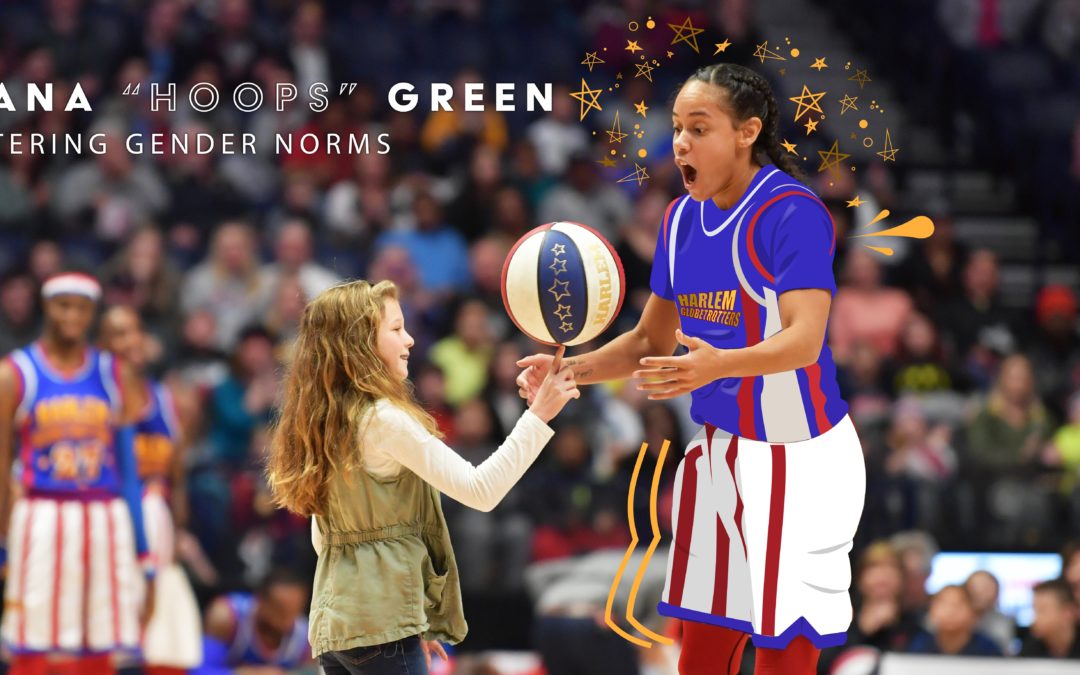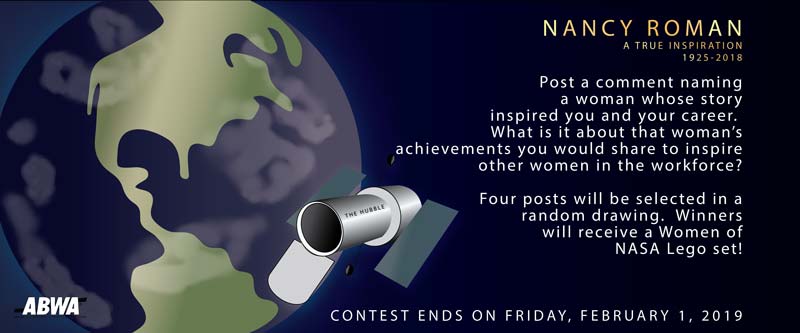
Briana “Hoops” Green is Shattering the Glass Ceiling
By Leigh Elmore. Leigh is editor-at-large for ABWA’s Women in Business Magazine. He lives and works in Kansas City, MO.
Flashy dribbler for the Harlem Globetrotters takes it to her male competitors. If you play for the Harlem Globetrotters, then you have to have a nickname. Many people “of a certain age” can remember some nicks of the Globetrotters’ past: “Meadowlark” Lemon and Fred “Curly” Neal, for example.
Well, move over guys, because these days the three traveling squads of Harlem Globetrotters boast players with the names such as “Champ” Thompson, “Ice” Hrynko, “Torch” George, “TNT” Lister, “Mighty” Mortimer, “Swish” Young and Briana “Hoops” Green, the seven women currently listed on the Globetrotters’ roster.
Green is the 15th woman to don the red, white and blue Globetrotters uniform, beginning with Lynette Woodard who joined the team in 1985.
“I first saw the Globetrotters when I was seven years old,” Green told ABWA recently. “I didn’t know who they were, but I certainly was entertained and impressed. But, at that young age I already knew that I wanted to play basketball professionally.”
During that time period Green was regularly playing pick-up ball with her older brother and other kids in the neighborhood of her hometown, Lexington, KY. She later went on to star on her high school team, Lexington Catholic, and helped the team garner two state championships on her way to playing college ball at the University of Texas-El Paso. Green would then play professionally in the Czech Republic, Spain and Mexico.
However, in 2017 she felt like she needed a change. “I was trying to figure out if I wanted to continue to play professionally overseas,” said Green. “It just so happened that I posted a video on Facebook of me dribbling, and the video went viral. Everybody was tagging the Globetrotters and how I should be on the team so a recruiter saw it and he invited me to try out.”
And the rest as we say is history. She was invited to join the team where she fills one of the roles as ball-handler and flashy dribbler. Now in her third year with the Globetrotters, she noted that she had played against boys from an early age and, “I played on a lot of co-ed teams,” along the way as well.
“As far as my dribbling ability, I think I can compete with the best of them. The dribbling part always came naturally,” she said. It’s the Globetrotters’ entertaining repertoire of tricks that she needed to practice. “I do have to work on it.”
Since her debut with the Globetrotters, Green has learned a lot from the teammates she calls brothers. Being a Globetrotter is all about providing entertainment—about mixing real, competitive basketball with the signature tricks and routines that fans have come to know and love. At the same time, it’s also about service and using the iconic Globetrotters brand for good.
“We are known for being ambassadors of good will,” she said. “It’s about being good role models for kids.” She says some of her favorite moments are talking to kids after the games. “I’m used to little girls looking up to another girl, but when a younger guy comes up to me and tells me that I’m their favorite basketball player, I’m like, ‘Yeah, we can do this!’” she said.
She and her teammates visit a lot of schools and hospitals as part of the Globetrotters’ goodwill efforts.
The Harlem Globetrotters have always been enthralling and accessible. But, by including female athletes in their engaging routines, they’ve anchored a new demographic: Girls. The women on their active roster have become role models for young women everywhere. While leagues like the Women’s National Basketball Association (WNBA) and the National Collegiate Athletic Association (NCAA) also showcase women’s basketball, playing on the Globetrotters gives Hoops and her female teammates a unique chance to match up against talented male athletes.
“It’s important that everyone knows that women are more than capable of competing at that level,” she said, “not just with basketball, with anything.”




